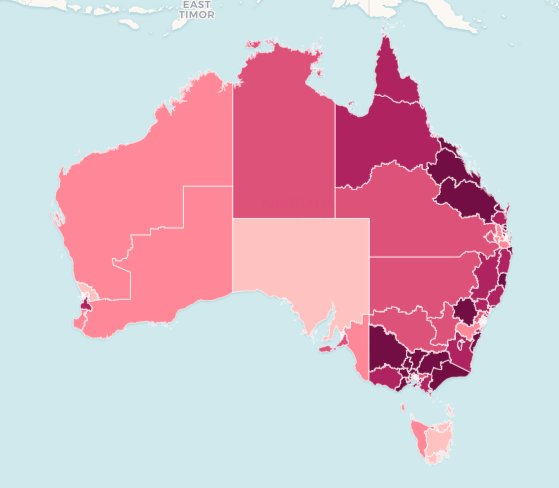As of the end of voting on Wednesday night, just over 3.5 million Australians had cast a vote via pre-poll. This broke the record of just over 3.2 million pre-poll votes which were cast in the entirety of the 2016 campaign.
Almost 500,000 people voted on Wednesday. If similar numbers vote today and on Friday this would bring us to a total of 4.5 million pre-poll votes, which is just over 27% of all enrolled Australians. The following chart is an updated version of the chart posted two weeks ago:
In 2016, pre-poll made up 20.6% of all enrolments, and 22.7% of the turnout. If turnout is about 91% (as in 2016), that would mean that pre-poll would make up just over 30% of the total vote. Postal votes made up 8.6% of the total vote in 2016. Current data suggests that we are headed for similar numbers of postal vote applications as in 2016. If postal votes make up a similar proportion of the electorate, that would mean that almost 40% of votes would have been cast before election day.
There are some remarkable numbers when you break down the statistics by state and electorate.
21.4% of all enrolled voters have cast their vote via pre-poll so far. This statistic varies significantly between states. Less than 13% of those enrolled have voted in Tasmania, with the rate not much higher in South Australia and Western Australia. 20% have voted in New South Wales, with almost 25% having voted in the ACT, Northern Territory and Queensland. Over 26% have voted in Victoria.
This variation comes despite the fact that the biggest growth has taken place in the smaller states. Pre-poll voting so far has more than doubled in South Australia, and has increased by 91% in Tasmania and 74% in Western Australia.
This is explained by the fact that the gap between the big states and the small states was even wider in 2016. The total pre-poll vote in 2016 as a proportion of enrolment was approximately 9% in each of the three smaller states, compared to 17% in NSW and over 20% in Victoria and Queensland.
There are a number of seats where it looks like the final pre-poll share of the vote will end up being very high, and could potentially make up a majority of the total vote in that seat.
Pre-poll votes so far make up 39.8% of all enrolments in Hinkler. Over 35% of enrolment has already cast their vote in Indi, Fraser and Flinders.
The map above can be toggled to show the percentage increase in pre-poll voting for each seat at this point. Bear in mind that I haven’t been able to take into account any change in electoral boundaries. So in the case of Fraser and Canberra there is no comparable data, and in some cases the increases are not accurate. Still worth checking out.
Finally, the following table shows some of the key stats by state. Bear in mind the 2019 data is up to Wednesday, while the 2016 data are the final figures.
| State | % of total vote 2016 | % of enrolment 2016 | % of enrolment 2019 |
| NSW | 18.9 | 17.3 | 20.0 |
| VIC | 22.2 | 20.2 | 26.2 |
| QLD | 23.7 | 21.6 | 24.1 |
| WA | 10.4 | 9.2 | 15.1 |
| SA | 10.0 | 9.2 | 14.1 |
| TAS | 9.5 | 8.9 | 12.8 |
| ACT | 26.0 | 23.9 | 24.8 |
| NT | 23.0 | 18.1 | 24.9 |



